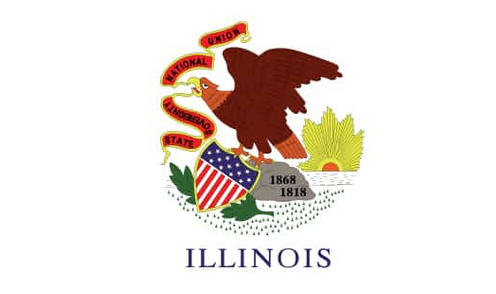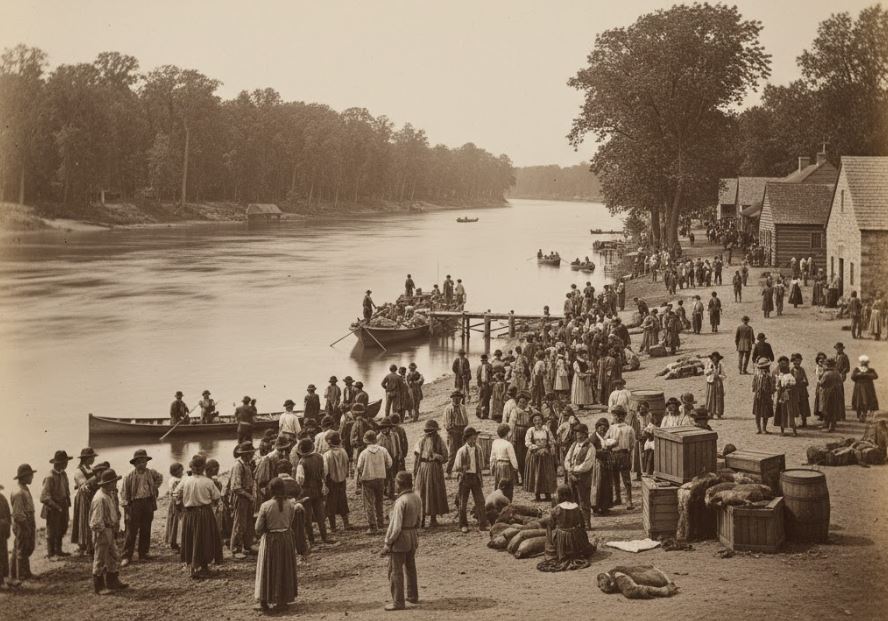Let's explore the names and historical phases that defined Illinois before its statehood.
Land of the Illinois Confederation
For thousands of years, the fertile plains and river valleys of what is now Illinois were home to numerous Native American peoples. The most prominent group, and the one from whom the state takes its name, was the Illinois Confederation (also known as Illiniwek or Illini). This was a group of closely related Algonquian-speaking tribes, including the Kaskaskia, Peoria, Cahokia, Tamaroa, and Michigamea, who inhabited much of the central and southern parts of the state.
The name "Illinois" itself is derived from the French transliteration of the Algonquian word "iliniwok" or "irenweewa," meaning "speak normally" or "they are normal speakers." The French explorers adopted this term to refer to the people they encountered, and it later came to be associated with the land.
Other tribes, such as the Potawatomi, Miami, Sac, and Fox, also lived in or utilized parts of the Illinois region, particularly in the northern areas.
French Louisiana: "Pays des Illinois" / Louisiane
The first Europeans to extensively explore the Illinois region were the French. In 1673, Father Jacques Marquette and Louis Jolliet traversed the Mississippi River and then journeyed up the Illinois River, encountering the Illinois Confederation. They were impressed by the fertile lands and friendly inhabitants.
Following their exploration, the French established a strong presence. In 1682, René-Robert Cavelier, Sieur de La Salle, claimed the entire Mississippi River watershed for France, naming it "Louisiane" (Louisiana) in honor of King Louis XIV. The Illinois country, known to the French as "Pays des Illinois" (Illinois Country), became a crucial part of this vast empire.
French settlements and missions were established, notably Kaskaskia (founded 1703) and Cahokia (founded 1699), which became centers of trade, agriculture, and French culture in the interior of North America. These communities, along with French forts like Fort Chartres, formed the "Illinois Country" within French Louisiana.
British North America: Part of Quebec (Briefly)
Following their defeat in the French and Indian War (Seven Years' War), France ceded its claims east of the Mississippi River to Great Britain in the Treaty of Paris of 1763. This brought the Illinois Country under British control.
British rule was not popular with the existing French inhabitants or their Native American allies, who had largely sided with the French. During this period, the Illinois Country was generally administered as part of the Province of Quebec, though British control was often tenuous and distant.
American Expansion: Northwest Territory
After the American Revolutionary War, the Treaty of Paris of 1783 formally transferred British claims south of the Great Lakes to the newly formed United States. This vast region, including Illinois, became part of the Northwest Territory, established by the U.S. Congress in 1787.
The Northwest Ordinance of 1787 was a landmark piece of legislation that established a framework for governing the territory, prohibited slavery, guaranteed religious freedom, and established a process for the formation of new states.
As American settlements slowly pushed westward, the Northwest Territory was successively divided:
- Indiana Territory (1800-1809): Illinois was initially part of this larger territory, with its capital at Vincennes (present-day Indiana).
- Illinois Territory (1809-1818): As the population grew, Congress created the Illinois Territory on February 3, 1809. Kaskaskia served as its capital. This marked the final, distinct administrative phase before full statehood.
The territorial period was marked by increasing American settlement, conflicts with Native American tribes (culminating in the War of 1812), and the development of early infrastructure.
Statehood
With a growing population and the successful resolution of conflicts with Native American tribes, the Illinois Territory was ready for statehood. A constitutional convention was held in 1818, and a state constitution was drafted.
 On December 3, 1818, President James Monroe signed the bill admitting Illinois to the Union as the 21st state. The name "Illinois," reflecting its deep indigenous and French colonial roots, was retained for the new state.
On December 3, 1818, President James Monroe signed the bill admitting Illinois to the Union as the 21st state. The name "Illinois," reflecting its deep indigenous and French colonial roots, was retained for the new state.



